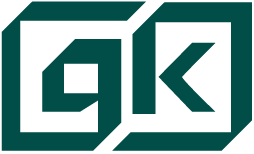By Adrian Henriques, Professor of Accountability and CSR – Middlesex University
Traceability matters
‘How far can you trace your responsibilities?’ is not only a difficult philosophical and moral question, it is also a practical and even a commercial one. Before looking at the commercial issues, it is worth a very quick detour to think about the moral philosophy: everything we do both relies on and also sets off an endless chain of consequences. It is very hard to trace the consequences of our actions very far, but in so far as we can, we are held morally accountable. And of course, we are also held accountable for what we intend to do and the consequences we try deliberately to bring about.
What has this got to do with the commercial world? Quite a lot, since the expectations of the public regarding what companies are responsible for has been rising inexorably over recent years. Driven in part by consumers, but also by environmental concerns, companies are these days expected to take responsibility not only for what they buy and the associated supply chains – but also for what they sell and the associated ‘demand chains’. In short, the entire value chain is fair game.
Where the consequences are most serious, these expectations have also been codified in law. The recent Modern Slavery Act in the UK and the Dodd-Frank Act in the USA are examples. While the Acts focus on transparency, they provide a powerful incentive for companies to change their supply chain management processes.
More widely, without knowing where the parts of a product come from – and where they go after manufacture and use – it is not possible to put in place fully robust processes to determine what their impacts may be. And without that, in addition to the increase in commercial risk, corporate strategies for responding appropriately to environmental and social impact become haphazard.
Where customer health and corporate reputation are at stake, traceability is taken seriously. For example, a significant part of the fresh produce sold by supermarkets can be traced back not only to the farm where the plants were grown but sometimes to a small number of rows of plants in a particular field.
Other industries also currently go to great lengths to trace their products in use, especially when they are expensive. Rolls Royce knows where its thousands of engines are located at any point in time. That is largely because the engines are extremely expensive and incur great costs when they are idle or out of service. Similarly, for radioactive products, the impacts can be very severe, so tracing may go right through to ‘final’ disposal.
Unfortunately, the globalisation of world trade has compounded the problem of tracing supply chains for many products. As a result, very few products or their components can, in fact, be traced fully to their raw material source – or to their final disposition after use. This lack of traceability exposes businesses of all kinds, from primary producers through to retailers, to compliance, reputation and financial risks.
Assessing traceability
Currently, there is no feasible, credible and widely accepted framework for assuring the source or destination of materials, components and ingredients throughout a value chain. Indeed the length and complexity of the global supply chains of the modern world may seem to make the task of achieving full traceability impossible.
Since traceability systems almost by their nature require co-operation and communication across organisational boundaries, standards have an essential role to play. Yet the overall picture of traceability standards is fragmented.
There is a considerable degree of standardisation around the marking of products (through bar codes, for example) which enable traceability. However organisations that have a measure of vertical integration in their operations may develop proprietary traceability systems. And sometimes different industries each have their own traceability systems. While this may be a valid response by the organisation concerned, it deepens the overall global fragmentation.
In some areas, such as aspects of the IT systems needed to support traceability, there are more general standards. And there are plans to develop an ISO ‘chain of custody’ standard. These, however, focus on specific kinds of operational implementations of traceability, not on the full picture. A chain of custody standard, for example, may set out the various ways in which a sequence of owners of goods should relate to each other in order to capture the identities of the product’s owners as the product progresses through the supply chain. But it is not designed to answer the question ‘how far can you trace the product along the value chain?’, except in a rather roundabout way.
On top of that, new technologies are being deployed (or old ones re-purposed) that can dramatically help with traceability. These include DNA testing, RfID techniques and isotopic analysis. But without a framework to understand the traceability implications, it will be hard to make best use of them in a value chain context.
So to sum up, what could a general traceability framework or standard do? The value of a general traceability standard or framework would arise from:
- The need to compare and facilitate the integration of the existing traceability landscape into a demonstrably effective traceability system
- Cost-savings over the implementation of traceability independently in new areas
- As part of due diligence, the assessment of the level of traceability achieved by a given traceability system
- The economic and social benefit derived from sharing good practice and encouraging traceability across increasing areas of economic activity.
Adrian Henriques is Professor of Accountability and CSR at Middlesex University, UK


